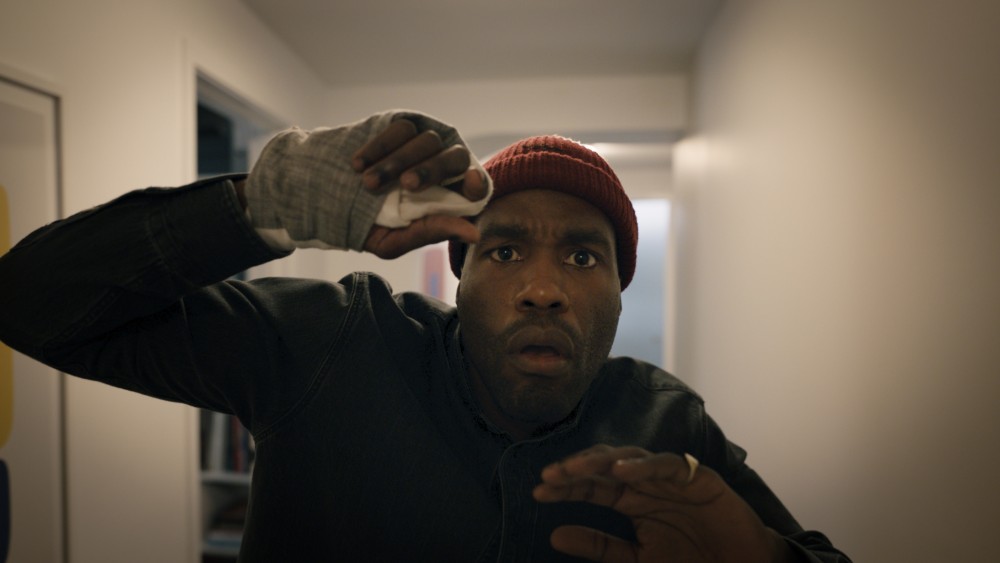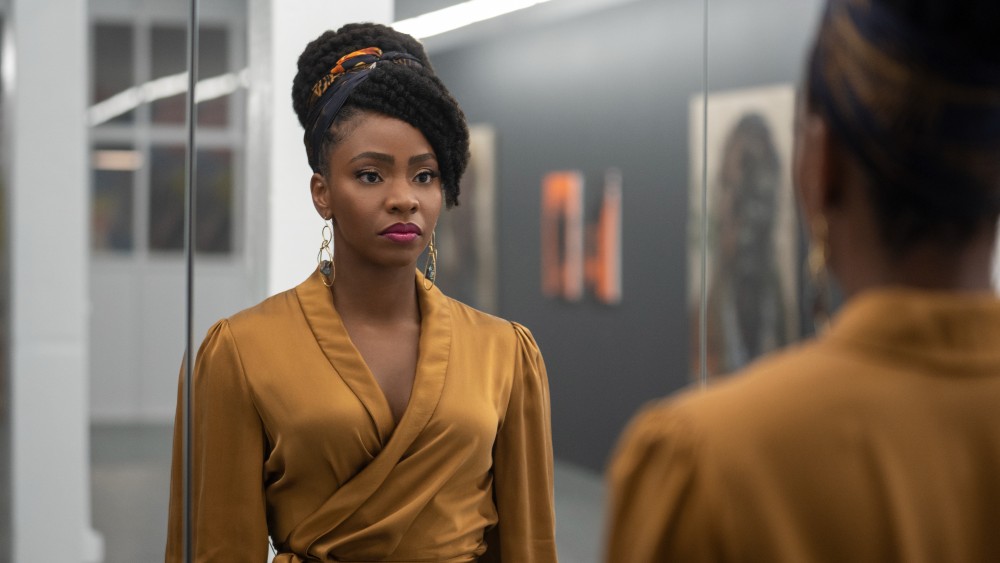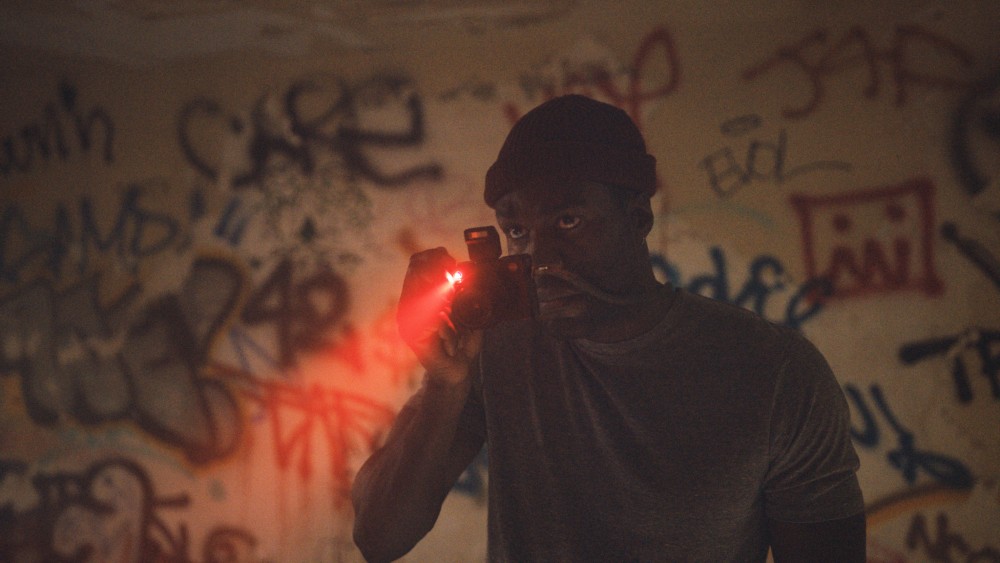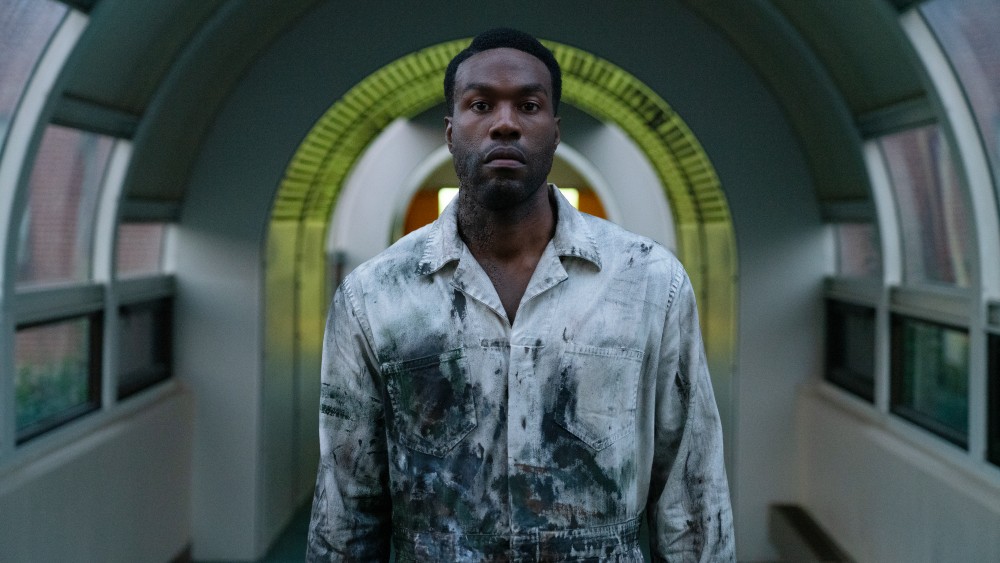
Depending on whom you ask, Bernard Rose’s 1992 horror flick Candyman, based on a short story by Clive Barker, was either a horror classic, or it was a quickly forgettable bit of novelty and, later, nostalgia. Clearly, Get Out’s Oscar-winning filmmaker, Jordan Peele, must have fallen in the latter group, because why else would he co-write and produce a modern-day remake along with Director Nia DaCosta (Little Woods)?
It’s hard to get too far into the plot without going into spoiler territory, but make no mistake that DaCosta’s Candyman is a direct sequel to the 1992 movie. This is made fairly clear as it opens with artist Anthony McCoy (Yahya Abdul-Mateen II) and his art curator girlfriend Brianna (Teyonah Parris) having a nice evening with her brother Troy (Nathan Stewart-Jarrett) and his boyfriend, when Troy brings up the story of Candyman. In fact, he tells the exact story from the original movie about Helen Lyle (played by Virginia Madsen in that movie) and the Cabrini-Green projects where Candyman was a scary urban legend. The myth is that if you say his name “Candyman” while looking into a mirror five times, you’ll summon him. Fascinated, Anthony decides to make his next art project on Cabrini and the myth of Candyman, which leads to a new series of grisly murders. The first bodies being found in front of one of Anthony’s art pieces brings him some notoriety, but as he becomes more obsessed with Candyman, he also starts seeing horrible things and maybe going a little bonkers himself.
From jump, it’s obvious that DaCosta and Peele (who co-wrote the script) are going to do much more with the idea behind the Candyman that was done in Rose’s film, and a lot of that comes down to them tying the myth of the Candyman further into Black Lives Matter by having the current incarnation being a black man at Cabrini who was brutally murdered by the police for giving razor-infused candy to kids. It also deals with the gentrification of the Chicago projects, as typified by Anthony (who comes from them) making his way through the elite art world of the city.
They’ve written a pretty solid script held together well by the performances from Abdul-Mateen II and Parris and with Stewart-Jarrett providing some welcome humor, but in some ways, it’s Colman Domingo’s William Burke, a laundryman with deep connections to Cabrini-Green, who also acts as a storyteller to fill Anthony in on the legends of Candyman. It’s that ability to be deathly serious one moment and lighter the next that worked so well in Peele’s Get Out, and that’s somewhat similar in Candyman but only to a point.

Candyman is still very much a slasher where the thrills come from dummies testing the theory behind the myth and getting their throats slashed or be fully disemboweled for their efforts. Because of this, there’s a perfectly good chance that fans of the original Candyman will be perfectly happy with the direction in which the filmmakers have taken the sequel. As it goes along, it’s obvious that they’ve taken a similar approach as the recent Blumhouse Halloween, in terms of never trying to reinvent the wheel as much as give it a few extra spins to make it more relatable for younger viewers who missed the ‘70s and ‘80s wave of slashers the first time around.
DaCosta quickly proves herself to be quite a potent filmmaker beyond her indie debut, as she works with a team that finds ways to build enough tension in between each of the scarier or gorier scenes, of which there are many. Her Cinematographer John Guleserian also comes from the world of indie but not necessarily from horror, although his camerawork and lighting bring so much to the film’s look. The production design work by Cara Brower (Gone Girl) is the most impressive in depicting the art galleries and creating Anthony’s art as it gets progressively more disturbing, as well as some of the abodes, but that’s only because the grungy Cabrini-Green projects are only going to look so good. (The Northside Strangers Home Baptist Church where the film’s climax takes place is somewhat more impressive.)
It’s becoming more and more obvious that the best horror movies these days either rise or crash and burn based on their sound work and how effects are integrated with the music, in this case, provided by an intriguing artist named Robert Aiki Aubrey Lowe, whose use of synthesis oftentimes straddles what might be considered music and what is more within the realm of sound effects. Both things work, though, whether it’s the rain pattering on the glass of a walkway as a stunned Anthony becomes more dazed by his situation or some of the screeches that mark the presence of Candyman.
On the other hand, some parts of the visual effects work better than others, whether it’s the illusions created to interplay Anthony with the Candyman’s realm within mirrors, which are quite effective, to the CG bees, which aren’t quite so great.
Ultimately and like far too many horror movies, it’s the film’s last act and the numerous twists and big reveals that might determine whether this Candyman is for you, or whether it’s a franchise that was better left dead and buried. Like Peele’s own work, Nia DaCosta makes a Candyman that offers a mix of humor, horror and social commentary, although its twists don’t help it veer too far away from being only a semi-satisfying slasher.
Rating: 7.5/10
Candyman will be released only in theaters on Friday, August 27 by Universal Pictures with previews on Thursday night.
All photos courtesy Universal.







